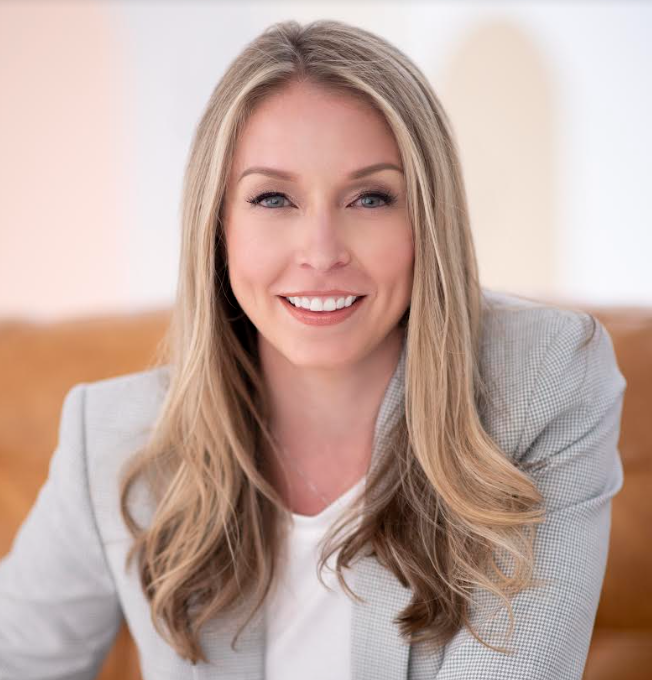
Startup founders face endless challenges. One of which is what to prioritize. For Megan Henken, co-founder of MyUTI—a femtech company focused on helping those with frequent urinary tract infections—creating great content was a top task.
Breaking through in the world of healthcare startups is tough. Henken knew that the company had to quickly build trust and gain awareness with patients and providers. In this interview, Henken discusses how she approached content for MyUTI, why she believes content is so important, and what’s been successful for the company so far.
Startup founders face so many competing priorities. Why did you decide to focus on content strategy?
HENKEN: Content is an essential part of our company. From the beginning, we knew that we wanted MyUTI.com to be a source of compelling and educational content. Our mission has always been to provide comprehensive, research-based information to empower individuals seeking relief from frequent urinary tract infections. So we had to have a content strategy in place to be able to support these overarching goals.
Additionally, as a startup, content plays an important role in demonstrating the value of our solution and offering. We are providing access to advanced laboratory testing technology, plus we are shifting the healthcare delivery model, which makes providing straightforward content and messaging vital. Our content is still a work in progress and we plan to continue to measure performance through search analytics and surveys.
How did you decide where to start with your content strategy? What were your first steps?
HENKEN: As we prepared to transition from an education website to a solutions provider, we knew we needed to be thoughtful in how we designed our content. Most importantly, we wanted to make sure that our existing website content was approachable.
Early on, as we were defining the MyUTI.com MVP (minimal viable product) we did customer interviews to understand the pain points we were trying to solve with our lab services and platform. Through this exercise, we mapped our customer journey, which gave us visibility to a few common themes. In tandem, we were also going through a rebrand; that process forced us to think about our brand values.
Then, as we were building out our MVP, my focus was to use our website as a place to learn and test content, so we had a shorter road at launch for reaching our target consumers. That led to us focusing on streamlining website content, improving SEO, and identifying opportunities for asset development. I worked with a copywriter to build out blog content so we could start to have a regular cadence of pushing out material, to begin to gain traction for search as well as to refine the audience we wanted to attract through paid search.
We also dug into reviewing our current webpages and worked on simplified messaging. Through this process we identified content-rich assets that we could pull into a wide variety of content products to use later for engagement tracking (eg. ebooks and downloads) and to repurpose in different scenarios–or as I like to say, this is content that ‘has legs.’
How did you get up to speed on content strategy?
HENKEN: As a founder, there’s always the precarious balance between doing and strategizing. As we were barreling towards launch, I decided to take a step back and go through the Content Science courses on Content Strategy and Content Vision as a bit of a ‘gut check.’ This was one of the most helpful things I could have done. The structure of that course led me to hosting a mini-workshop with my co-founder Lindsey Williams. We revisited our brand vision and found that it had shifted since our original branding exercise 18 months prior. By reevaluating our branding, we became very clear on our messaging pillars. We really enjoyed working through the aspirational exercise of the content vision statement and describing where MyUTI will be in the future.
How’s your content strategy going? Can you share an example of what’s working well?
HENKEN: Our content continues to be a living and breathing part of the business. Over the last year we’ve been consistently putting out blogs and adding to our downloadable resources. Our website traffic continues to grow and thrive without us having to invest much in terms of marketing dollars. The MyUTI name continues to be a top search term, which has led to consistent organic traffic month over month. Our search term ranking is also helping our overall traffic performance, which is above the industry standard for time on page (average 3 minutes), with just over two page views per session. With our beta market launch, we just started investing in paid search, so I am eager to see how performance shifts as we lean into specific key search terms to drive traffic.
Planning for the back half of the year, we have identified the phases of our customer journey where we have gaps in content and where we have the opportunity to be subject matter experts. This is helping me to restructure our content priorities for the remainder of 2022 and into 2023.
What content challenges have you faced and how are you overcoming them?
HENKEN: Women’s health and the topics around pelvic health, like urinary tract infections, have inherent challenges. From a content perspective, talking about a medical condition can be complex, nuanced, and full of jargon. The subject matter itself (UTIs) isn’t always a fun thing to talk about, plus there’s built-in stigma around the topic, and mounds of misinformation. Navigating the simplification of content, while keeping it clinically accurate and engaging is a balancing act. To overcome this, we go back to the consumer, and gather external feedback from women in our network who aren’t in healthcare. Seeking to understand if the messaging we are intending is actually coming through.
We also have the additional hurdle of social media advertising. Censorship can be a problem with women’s health topics on platforms such as Facebook and Instagram. Due to so much misinformation and aggrandizing on social platforms, social media giants have implemented sweeping guidelines and restrictions on content, which (inadvertently or not) end up blocking many women’s health topics for advertising. This isn’t unique to MyUTI, this is an issue that a number of maternal health, menstruation, reproductive health, and sexual wellness companies also struggle to overcome.
Such challenges have made us relentless in revisiting our content pillars. We know our differentiator will be our ability to produce content that’s strong and compelling, providing women and clinicians with the tools they need to make informed decisions.
What advice do you have for other startup founders regarding prioritizing and creating content?
HENKEN: I have always said it’s easier to be a critic than a creator. As a founder, there are so many elements you are building from the ground up that at times it can be daunting. For me, having the strategy documented keeps me honest. Also, taking the time at the beginning to develop and document a clear content vision and strategy is instrumental in providing foundational guidance for extended team members. They’re clear from the start what we are building towards, who our product/service is serving, and who we as a brand want to be. It also gives me the opportunity to ask the tough questions:
- How do we cut through the noise?
- What isn’t performing as planned and how do we optimize or refine?
- Are we optimizing the content to fill the gaps?
Events, Resources, + More
The Ultimate Guide to End-to-End Content
Discover why + how an end-to-end approach is critical in the age of AI with this comprehensive white paper.
The Content Advantage Book
The much-anticipated third edition of the highly rated book by Colleen Jones is available at book retailers worldwide. Learn more!
20 Signs of a Content Problem in a High-Stakes Initiative
Use this white paper to diagnose the problem so you can achieve the right solution faster.
Upskill with Content Science Academy
Training for modern content roles through on-demand certifications + courses or live workshops.







Comments
We invite you to share your perspective in a constructive way. To comment, please sign in or register. Our moderating team will review all comments and may edit them for clarity. Our team also may delete comments that are off-topic or disrespectful. All postings become the property of
Content Science Review.